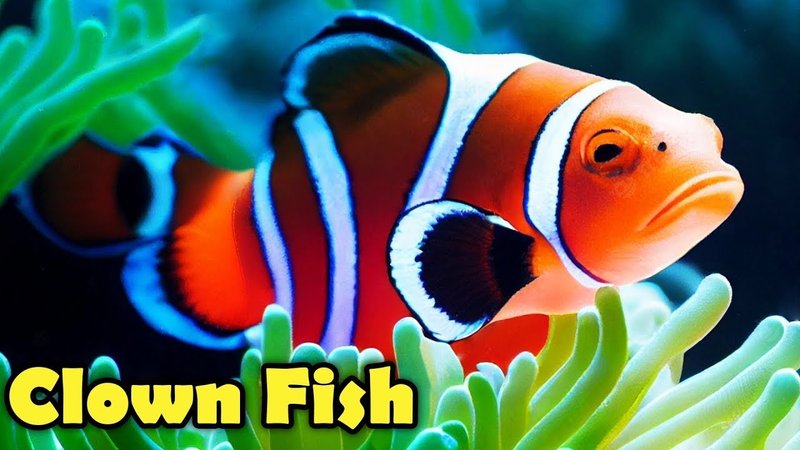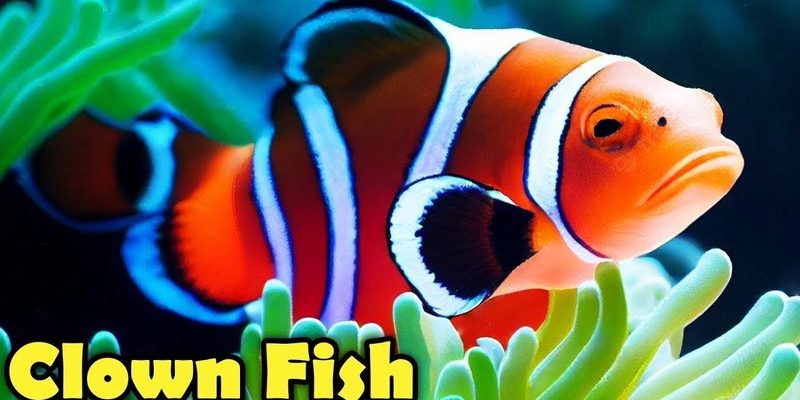
From their quirky behaviors to their unique habitats, clownfish have some surprising traits that set them apart. As we explore these fun facts, you might find yourself looking at clownfish in a whole new light. So grab a cup of coffee, and let’s swim into the depths of their underwater world!
1. Clownfish Live in Anemones
One of the most amazing relationships in the ocean is between clownfish and sea anemones. Clownfish take shelter in the stinging tentacles of anemones, which might sound dangerous at first. But here’s the kicker: clownfish have a special mucus on their skin that protects them from the anemone’s stings. This partnership is a classic example of mutualism, where both species benefit.
But how does this partnership work? The clownfish gets safety from predators while the anemone benefits from the clownfish’s waste, which acts as a fertilizer. Plus, the clownfish helps keep the anemone clean by eating debris. It’s like a little underwater cleaning service!
So, the next time you watch a clownfish flitting in and out of an anemone, remember that this relationship is all about teamwork.
2. They’re Born Male and Change Sex
Clownfish have a fascinating twist in their life cycle—they start as males and can change sex! In a group of clownfish, there’s usually a dominant female and several males. If the female dies or leaves the group, the largest male can undergo a sex change to become the new female. Isn’t that wild?
This unique adaptation helps maintain the social structure of their group. It ensures there’s always a breeding pair, which means better chances for the survival of their young. This ability to switch sexes isn’t just a circus trick; it’s a smart survival strategy in the unpredictable ocean environment.
So, if you ever hear someone say, “It’s a man’s world,” just remember that clownfish can flip the script!
3. Clownfish Have Patterns Unique to Each Species
You might think all clownfish look alike, but they actually have unique patterns and markings that help identify different species. There are about 30 recognized species of clownfish, each with its own distinctive color patterns and stripe configurations. For example, the Ocellaris clownfish, often seen in aquariums and known as the “Nemo fish,” has three white stripes, while the Percula clownfish typically has thicker black borders around its stripes.
Identifying clownfish species can be a fun challenge, especially if you’re exploring a coral reef. You might be amazed at how much variety exists in these little swimmers. Their colorful patterns are not only beautiful, but they also serve as protection, helping them blend in with their host anemones.
Next time you spot a clownfish, see if you can identify its species by looking closely at its unique markings!
4. They Can Make Sounds
Clownfish aren’t just pretty faces; they can also be quite vocal! They produce a variety of sounds to communicate with each other. These noises range from grunts to pops and even growls. It’s like they have their own underwater language!
These sounds play a crucial role in maintaining their social structure, especially during mating rituals or when defending their territory. Imagine a tiny, vibrant fish making its voice heard in the bustling world of the coral reef!
So, if you’re ever snorkeling in a clownfish habitat, keep your ears open. You might just hear their unique calls echoing through the water!
5. Clownfish Are Omnivores
What do clownfish eat? You might be surprised to learn that they are omnivores. They munch on a diverse diet that includes algae, zooplankton, and small invertebrates. Their diet is primarily influenced by their environment and the availability of food around their anemone homes.
Feeding near their anemone shelter provides clownfish with some added safety from predators while they nibble on their meals. It’s a win-win situation! In captivity, they can easily adapt to a diet of aquarium pellets, chopped shrimp, and seaweed flakes, making them popular among aquarium enthusiasts.
So, when it comes to dinner, clownfish are flexible and resourceful eaters.
6. They’re Found in Warm Waters
Clownfish are tropical fish, typically found in warm waters of the Pacific and Indian Oceans. They thrive in a narrow range of temperatures, usually between 75°F and 82°F (24°C to 28°C). That’s why you’ll often find them in coral reefs, where the water is warm and plenty of food is available.
These vibrant fish prefer shallow waters that provide shelter from predators. If you’re planning a scuba diving trip, you’re likely to encounter clownfish in these rich underwater ecosystems. Just remember to respect their space and admire them from a distance!
Their specific habitat and temperature preferences make them sensitive to changes in ocean conditions. Coral bleaching and climate change pose significant threats to their populations, so conservation efforts are crucial for their survival.
7. Clownfish Are Popular in Aquariums
It’s no surprise that clownfish are a favorite among aquarium enthusiasts. Their vibrant colors and friendly personalities make them perfect for home tanks. They’re relatively easy to care for, which is a big plus for beginners.
When keeping clownfish in an aquarium, it’s essential to create an environment that mimics their natural habitat. This means including anemones, plenty of rock structures, and hiding spots. They love to swim around, and having spaces to explore keeps them happy and healthy.
However, it’s important to note that some species of clownfish can be territorial. They might bully newcomers in the tank, so it’s wise to introduce them carefully. With the right setup, clownfish can thrive and bring joy to your underwater world.
8. Clownfish Can Live for Over 10 Years
Did you know that clownfish can live for a decade or more? In the wild, their lifespan varies, but many can live over 10 years, with some even reaching 20 years in captivity! This longevity is largely due to their symbiotic relationship with anemones, which provides them protection from predators.
Taking care of a clownfish in an aquarium can lead to a rewarding long-term pet relationship. If you give them the right environment and proper care, you could have a little aquatic friend swimming in your tank for many years. Just picture all the fun you could have watching them grow and interact with their surroundings!
9. Clownfish Are Colorful Adaptations of Nature
The bright colors of clownfish are not just for show; they serve important biological functions! Their striking orange hues and white stripes help them blend into the vibrant coral reefs and warn potential predators about their presence. The idea is simple: “Look at me, but don’t mess with me!”
These colors are particularly important during mating seasons when they attract partners. The brighter the colors, the more appealing they might be to potential mates. So, when you see those vivid shades, you’re looking at nature’s clever way of ensuring the clownfish’s survival and reproduction.
Nature is full of such beautiful adaptations, and clownfish are a prime example of evolution at work.
10. Conservation Is Key
As cute as clownfish are, they face various threats in the wild. Climate change, habitat loss, and pollution can seriously impact their populations and the delicate ecosystems they inhabit. Coral bleaching, in particular, is a significant concern, as it destroys the anemones that clownfish rely on for shelter and food.
Many organizations work to protect clownfish habitats and educate the public about their importance in marine ecosystems. By learning about these fascinating fish and supporting conservation efforts, you can play a part in preserving their future.
Next time you see a clownfish, remember that their vibrant lives depend on the health of our oceans.
In conclusion, clownfish are more than just charming little characters in movies. Their unique biology, vibrant colors, and fascinating behaviors make them a wonder of the ocean. Understanding these ten cool facts can help us appreciate and protect these wonderful creatures for generations to come. 🐠

